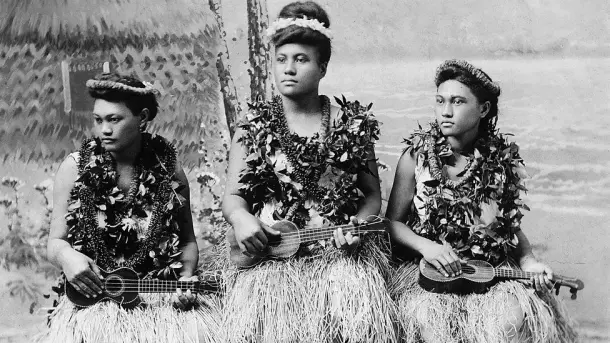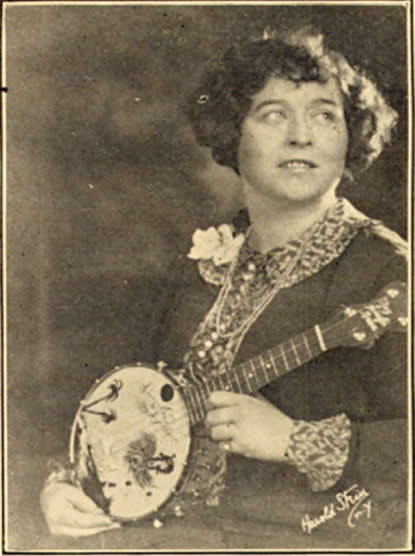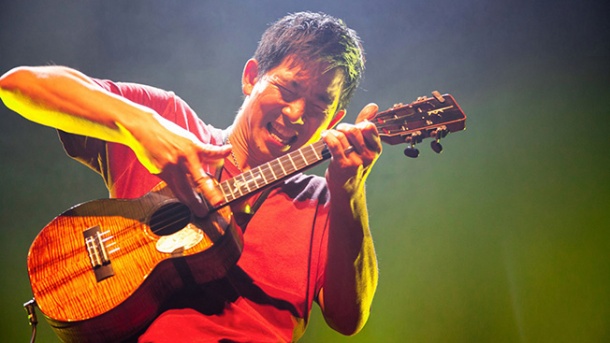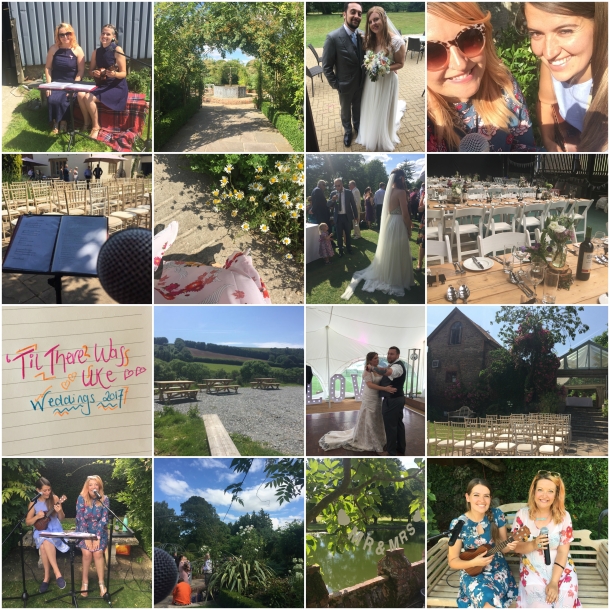Hello,
Although the ukulele can be wonderfully easy to play with lots of basic chords requiring only one finger placement on the neck, there are so many more chord options that can be played further up the neck creating an almost endless supply of harmonic sounds to get creative with. I love exploring different chord voicings (or inversions) and in TTWU I try to use lots of types of chord all over the neck to vary the sound.
Before I go in to detail about how to play a couple of different types of chord, I should probably explain what a chord is. A chord is more than one note, played together at the same time to create harmony. Depending on what notes are played in the chord and the intervals between each of them, a different quality or colour of sound is created. In Western music we have named these chords according to their harmonic intervals such:
Major
Minor
Augmented
Diminished
In basic triad form these chords have three notes each, if we look at them from the root note (which is the letter name of the given chord) we can see what is different about each of them. These are all based in the key of C:
Major: C E G
Minor: C Eb G
Augmented: C E G#
Diminished: C Eb Gb
So baring in mind that a ‘b’ = a flat note (or a lowered note) and a ‘#’ = a sharp note (or a raised note) already you can see how different these chords must sound!
Now, these chords only have three different notes, but on top of any of these chords you can add more notes! The most commonly known and used are 7th chords – which come in a number of different forms (major, minor, dominant etc.) But you can also have chord extensions (9ths, 11ths, 13ths), chord suspensions (sus2, sus4), altered chords (#9, b13 etc.) THE LIST GOES ON!!
All of these chords can be played in a number of different ways, we can play them in basic root position (with the letter name of the chord played at the bottom of the chord) or we can invert them to have a different note played at the bottom. This again creates different sound options and of course as you invert the chords further up the neck of the ukulele we get the change in pitch too. Just remember, chord inversions are basically the same notes played in a different order – I feel a Morecambe and Wise joke coming on……
So as you can see, the options really do feel endless! How exciting.
The most useful thing we can do on the ukulele to start utilising some of these different chord ideas is to learn barre chords. A barre chord is so called because you often have to use the index finger to play a barre across all four strings, but really a barre chord is just when all four strings are in use to create the chord. I also like to call them transferable shapes, because that is exactly what they are. And once you know a few of these shapes, you can transfer them to anywhere on the neck and it will play the same ‘type’ of chord (eg. major/minor) but in a different key (eg. C or F).
Here is a good first set of barre chords to learn, if you can get the hang of these – all you need to know is the letters of the frets along the A string to reposition them to that root note. For example, if you play them all from the 3rd fret they will all be types of C chord (because C is the note on the 3rd fret of the A string). But if you play these same shapes from the 7th fret, they will all be types of E chord (because E is the note on the 7th fret of the A string).

All played on the 3rd fret these four chords would be:
C (C Major) – notes – C E G
Cm (C Minor) – notes – C Eb G
C7 (C Dominant 7th) – notes – C E G Bb
Cm7 (C Minor 7th) – notes – C Eb G Bb
When you try them, have a good listen to how they sound. They all have different harmonic qualities that we have learnt to recognise with certain feelings and emotions. Major is often considered happy sounding, minor is considered more melancholy. As soon as you add the 7ths in, the chords instantly sound more complex and colourful. Different styles and genres of music tend to use particular types of chord to create the sound they want, for instance Rock and Roll music frequently uses the Dominant 7th chord, whereas Jazz music often favours Minor 7ths and complex chord extensions such as b13ths (so cool).
It is when these different types of chords are cleverly cobbled together into a chord structure, that the true music making magic begins! I find this whole topic utterly fascinating. It is something you could spend a life time discovering more about and I am continually finding new ways of playing chords and constructing them in to structures. I hope you have enjoyed learning a little about chords and perhaps you will listen slightly differently to them the next time you play or hear a song. As always, if you have any questions, please do get in touch.
Lucy x

























 ay (Bank Holiday Monday) saw us take to the stage in an utterly beautiful setting right on our doorstep! The Dorchester Town Council held a free, family event which saw hoards of local residents set up camp (some quiet literally!) to be entertained with live music from 1pm – 10pm at the stunning Maumbury Rings.
ay (Bank Holiday Monday) saw us take to the stage in an utterly beautiful setting right on our doorstep! The Dorchester Town Council held a free, family event which saw hoards of local residents set up camp (some quiet literally!) to be entertained with live music from 1pm – 10pm at the stunning Maumbury Rings.
